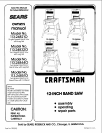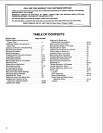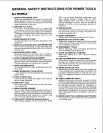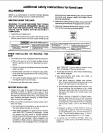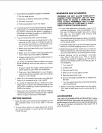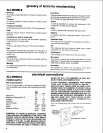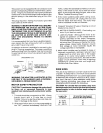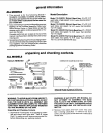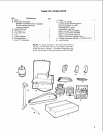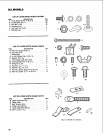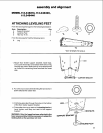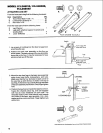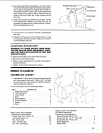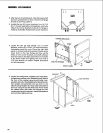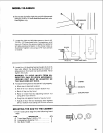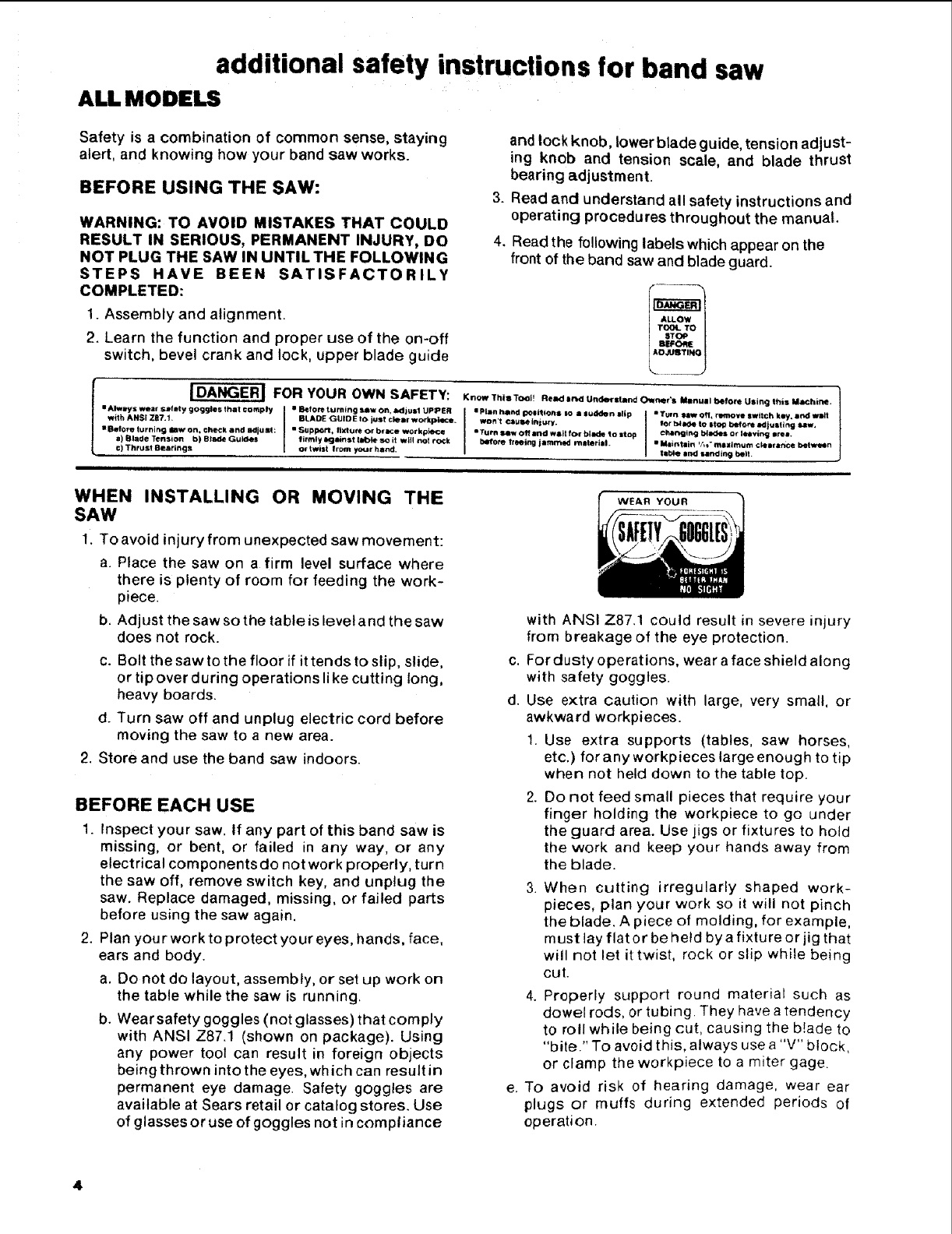
additional safety instructions for band saw
ALL MODELS
Safety is a combination of common sense, staying
alert, and knowing how your band saw works.
BEFORE USING THE SAW:
WARNING: TO AVOID MISTAKES THAT COULD
RESULT IN SERIOUS, PERMANENT INJURY, DO
NOT PLUG THE SAW IN UNTIL THE FOLLOWING
STEPS HAVE BEEN SATISFACTORILY
COMPLETED:
1. Assembly and alignment.
2. Learn the function and proper use of the on-off
switch, bevel crank and lock, upper blade guide
IDANGER I FOR YOUR OWN SAFETY:
• Always wear sM_ty goggles that comply • Before turning saw on, a_lj ust UPPER
with ANSI Z87.t BLADE GUIDE to ius! ciell workptece÷
• Before turning law on, check and adju st: • Supp_, fixture or braK;e workpJe_e
a) Blade Tensic)n b) Blade Guides firmly _mnst tabht so it will not rock
c) Thrust Searingl or twist Irom y_r hand,
and lock knob, lower blade guide, tension adjust-
ing knob and tension scale, and blade thrust
bearing adjustment.
3. Read and understand all safety instructions and
operating procedures throughout the manual.
4. Read the following labels which appear on the
front of the band saw and blade guard.
f----
L___J
Krlow This Tool! Read ind Undersland Owner's Manual before Using this MaChine.
•Plan hand politt _0ns so • sudden •lip • Tt.n _ Off. fro'hove switch key, •rid wMt
won't cau_ injury, tot" _4a4e to s|o_ b.efom adjusting _w.
•Turn sew O11 and wa_t for blade to stop char_ltrsg bla<_s or leevir_g arel.
b4r/0fe treeing jammed rnaterlal_ • Meintain _/*1"ma=lmum cl4arance betmn
fiM.e and sanding belt.
WHEN INSTALLING OR MOVING THE
SAW
1. To avoid injury from unexpected saw movement:
a. Place the saw on a firm level surface where
there is plenty of room for feeding the work-
piece.
b. Adjust the saw so the table is level and the saw
does not rock.
c. Bolt the saw to the floor if it tends to slip, slide,
or tip over during operations like cutting long,
heavy boards.
d. Turn saw off and unplug electric cord before
moving the saw to a new area.
2. Store and use the band saw indoors.
BEFORE EACH USE
1. Inspect your saw. If any part of this band saw is
missing, or bent, or failed in any way, or any
electrical componentsdo not work properly, turn
the saw off, remove switch key, and unplug the
saw. Replace damaged, missing, or failed parts
before using the saw again.
2. Plan your work to protect your eyes, hands, face,
ears and body.
a. Do not do layout, assembly, or set up work on
the table while the saw is running.
b. Wear safety goggles (not glasses) that comply
with ANSI Z87.1 (shown on package). Using
any power tool can result in foreign objects
being thrown into the eyes, which can result in
permanent eye damage. Safety goggles are
available at Sears retail or catalog stores. Use
of glasses or use of goggles not in compliance
WEAR YOUR
with ANSI Z87.1 could result in severe injury
from breakage of the eye protection.
c. For dusty operations, wear a face shield along
with safety goggles.
d. Use extra caution with large, very small, or
awkward workpieces.
1. Use extra supports (tables, saw horses,
etc.) forany workpieces large enough to tip
when not held down to the table top.
2. Do not feed small pieces that require your
finger holding the workpiece to go under
the guard area. Use jigs or fixtures to hold
the work and keep your hands away from
the blade.
. When cutting irregularly shaped work-
pieces, plan your work so it will not pinch
the blade. A piece of molding, for example,
must lay flat or be held by a fixtu re or jig that
will not let it twist, rock or slip while being
cut.
4. Properly support round material such as
dowel rods, or tubing. They have a tendency
to roll while being cut, causing the b!ade to
"bite." To avoid this, always use a"V" block,
or clamp the workpiece to a miter gage.
e. To avoid risk of hearing damage, wear ear
plugs or muffs during extended periods of
operation.



